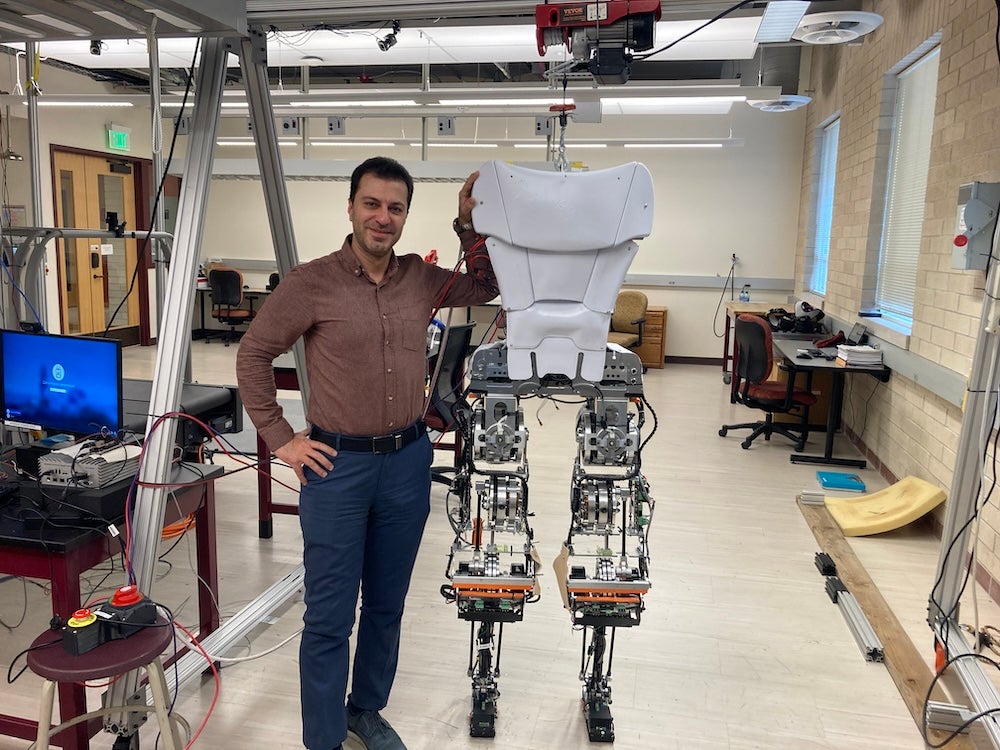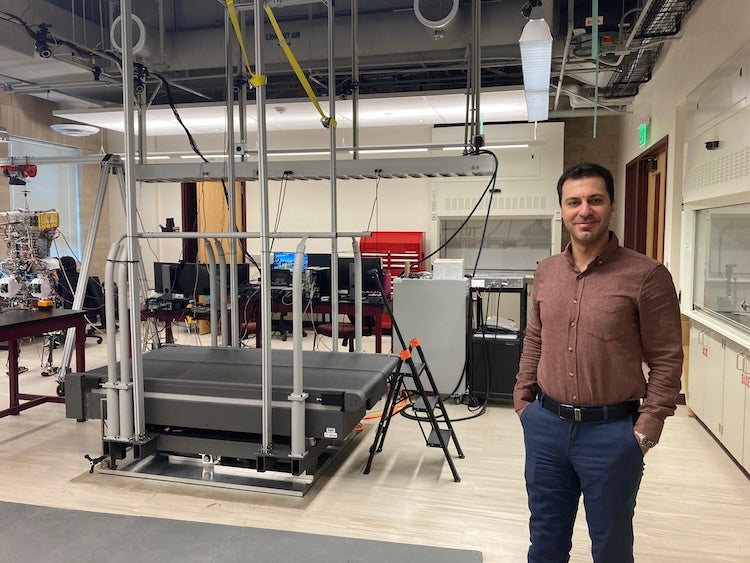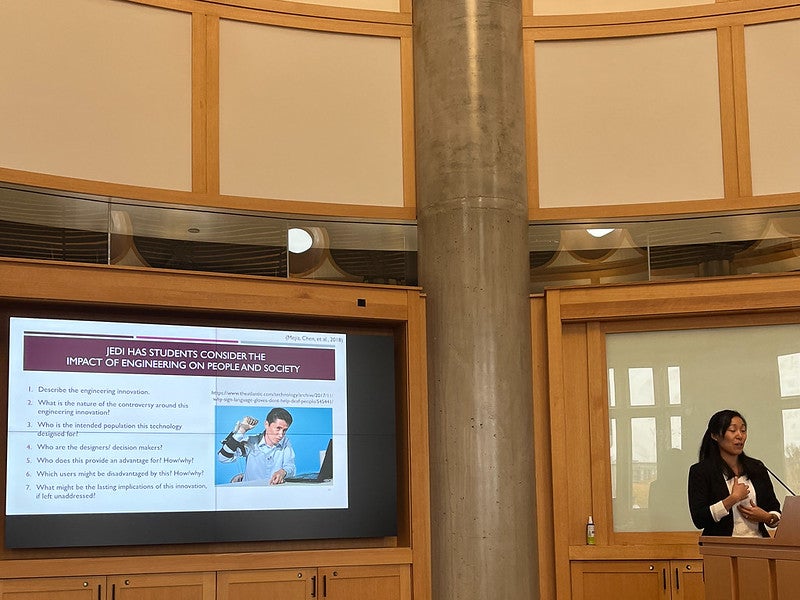Meet the Professor and Team Behind Mithra, the Walking Robot
When the University of Denver goes on winter break, technological innovation doesn’t rest. At the Ritchie School of Engineering and Computer Science, people are working in labs on projects for advancement in their fields.
Dr. Siavash Rezazadeh, professor in the Mechanical Engineering department, has been with the Ritchie School since 2019, and this academic year, he’s been working on a walking robot.
“Robots were always interesting to me, since my younger days,” said Dr. Rezazadeh. “And then when I was in my undergrad, I got an opportunity to work with grad students to build a robot, which made me very interested in robotics and different applications… I really enjoy working with robots and getting them to work getting them to life, so to speak.”
On the Ritchie School’s third floor, the in-progress robot “Mithra” is on display and able to be seen on tours, so students and visitors can see the process.
“This lab works on two main branches. One of them is humanoid robots, to get them to work in the environmental settings that humans use. For example, wheeled robot is great for working on roads, on sidewalks, flat surfaces, but they cannot go upstairs, in the settings that humans can navigate pretty easily… We are pretty far from the kind of elegance of human walking. If you look at most of humanoid robots today, they are kind of walking robotically. They are not as elegant as humans. We are trying to solve that problem.”
In the lab, there are computers for tracking research as well as the robot. Near the robot is a treadmill for studying human subjects to build a stronger robot.
“We want to engage human experiments with robots. Usually, robots are designed separately and controlled separately, and only very rough ideas about human workings are used in them,” Dr. Rezazadeh said. “What we are doing here is, through that treadmill, we test human subjects to see how they walk, and then they study their walking and how they control their walking and try to translate it to robots.”
It's important for prosthetic robots to be able to walk as closely to a human as possible. “Aesthetic can be a part of it. But more importantly, this will be more energy efficient. If you try to walk robotically like a robot, you see that you get tired very quickly, because it's energy inefficient. If we can figure out how humans walk, and how they are so efficient in walking, we can make our robots to work more efficiently.”
The lab requires a lot of collaboration, not only from human subjects, but from students who help build the robot and track data.
“Things are going forward a little slowly, but we have built this robot from scratch,” Dr. Rezazadeh said, referring to his student team that includes: Chathura Semasinghe, Harsha Karunanayaka, Carter Sorensen, Zahra Khashei, Teddy Bounds, and Guillermo Selva. The students are a mix of graduate and undergraduate students, all with different focuses and involvement in Mithra the robot’s creation and design, from balance control to fabrication to human walking modeling.
“We designed the robot and now we are trying to control it to work in parallel set up we have built over the treadmill.” Dr. Rezazadeh gestured to the raised treadmill in the center of the room and the set up above it. “There is a motor up there and we connect the motor to the human subjects and apply perturbations to their walking and see how they control themselves.
This comparison in the study is not only key in helping to improve movement in the robot’s motions, but in increasing the understanding that humans can have for robots.
“People may have a misled impression of robots, due to what they see in movies,” Dr. Rezazadeh said. “Robots can be a little intimidating, especially with the progress that we see nowadays with AI (artificial intelligence). But there is a lot of room for using the robots for improvement of human life and I want people, especially younger generations, to get into robotics and design and build newer robots and make the field progress for improvement of human life.”
Explore additional research in Robotics and Mechatronics at the Ritchie School.






